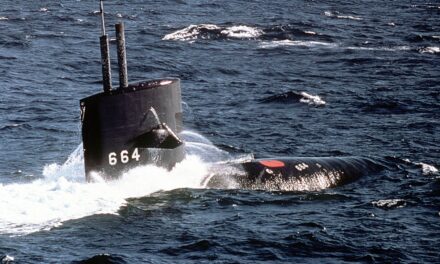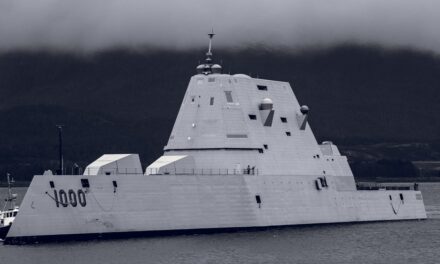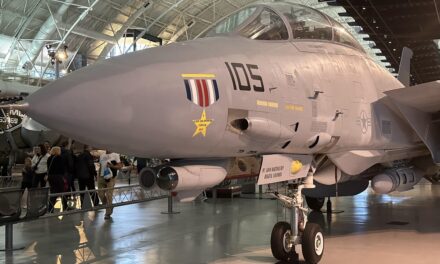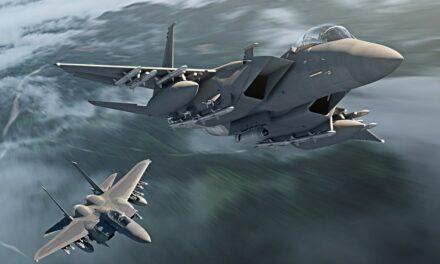We support our Publishers and Content Creators. You can view this story on their website by CLICKING HERE.
Key Points: The Xian H-6 bomber, derived from the Soviet Tu-16, remains a cornerstone of China’s aerial arsenal despite its 1950s origins.
-This nuclear-capable bomber, with a combat range of 2,500 miles and payload capacity of 25,000 pounds, serves as a platform for air-launched ballistic and cruise missiles, enhancing China’s standoff capabilities.
-Flexible enough for reconnaissance, missile strikes, and maritime roles, the H-6 integrates seamlessly into China’s “system-of-systems” strategy, challenging U.S. naval operations in the Pacific.
-Like the U.S. B-52, the H-6 endures due to its robust design and adaptability, proving older platforms can remain effective with modern upgrades.
Why China’s H-6 Bomber Remains a Threat After Seven Decades
Why, in addition to building a hyper-modern fleet of stealth fighters, has China decided to invest in a bomber that didn’t even represent the cutting edge of 1950s-era jet technology? For many of the same reasons that the United States will continue to operate the B-52 Stratofortress for the foreseeable future, China’s navy and air force have determined that the ancient Xian H-6 bomber will continue to serve as a nuclear deterrent and a maritime combat aircraft, more than seventy years after its first flight.
Meet the Xian H-6 Bomber
The Xian H-6 is a license-built version of the Soviet Tu-16, which first flew in 1952. A twin-engined jet bomber, the Tu-16 (NATO designation: Badger) fulfilled a variety of roles in the early years of the Soviet nuclear enterprise, including designation as a nuclear free-fall bomber and early cruise missile test-bed. Deliveries of the Tu-16 to China began in the late 1950s and led to a joint-production program that used Russian equipment and know-how to manufacture the bomber in Chinese factories. This program ended with the Sino-Soviet Split of the early 1960s, but by the late 1960s China was capable of manufacturing the bomber on its own.
H-6 Bomber. Image Credit: Creative Commons.
Modern versions of the H-6 are reputed to have a service ceiling of around 42000’ and a combat range of 2500 miles, the latter achieved by updated engines and advanced composite construction materials. The H-6 can carry some 20-25000 pounds of weapons in various loadouts, and can in different configurations carry a variety of reconnaissance and intelligence-gathering equipment. Its cruising speed is about 470 mph, with a maximum speed above 650 mph. Overall China operates some 230 H-6 bombers of various configurations, including roughly fifty dedicated to naval service.
The Utility
The H-6 (much as its forebear the Tu-16) has proven to be a remarkably flexible platform. Sebastien Roblin of Popular Mechanics recently did a deep dive into the range of missions performed by the H-6 in Chinese service. While the H-6 no longer carries free-fall nuclear bombs (no one at this point would rely on an H-6 to penetrate enemy airspace to the extent that it could get close enough to a target to use such weapons) it does carry nuclear-capable air-launched ballistic missiles. This gives the bomber (and, by extension, China) standoff nuclear attack capabilities across East Asia.
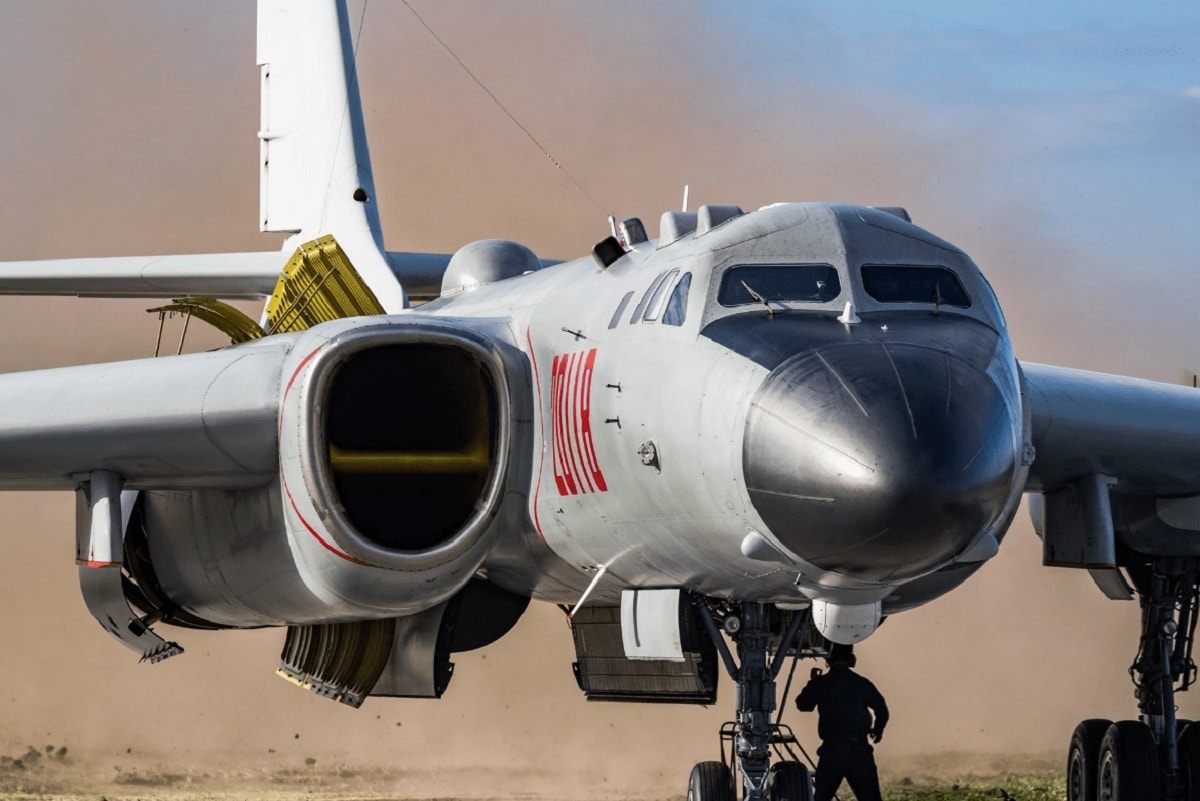
Image: Creative Commons.
In addition to their nuclear capabilities, the H-6 can fulfill a wide range of conventional roles. These include long-range missile strikes against land and sea targets, maritime scouting and reconnaissance, and even maritime minelaying. Its ability to fire very long-range cruise missiles makes it a threat to land and sea-based targets deep into the Pacific. H-6s can launch missiles from relative safety, then return to base to rearm and re-equip for subsequent strikes. It is this capability that worries the US Navy, which, with the retirement of the F-14 Tomcat, gave up much of its long-range air defense capability. The H-6 can operate as part of a “system-of-systems,” including ground-launched missiles, submarines, and surface ships, to deny the US Navy access to the waters around Taiwan or any other area of conflict in the region.
Bombs Away
How do such old designs survive even as the cost of cutting-edge aeronautic technology accelerates upward?
The short answer is that engineers in the 1950s understood the basic logic of large jet aircraft well enough to create robust designs that could continue to perform the basic mission of delivering cargo indefinitely. The fact that the H-6 is an ancient design does not set it apart from many of the bombers that remain in service today. Having first flown in 1950, the B-52 famously remains in U.S. Air Force service and will probably outlast its successor aircraft, the B-1B and the B-2. This engineering reality extends to civilian aircraft; the Boeing 737 was developed from the 1950s era Boeing 707, entered service in 1968, and remains in production today.

PLANAF HY-6U with aerial refuelling pods (2008) “The most distinct difference between HY-6U and HY-6D is that HY-6U has a metal nose cone, while HY-6D still has the transparent glass nose”.
For the role it is intended to serve, the H-6 requires long-range and significant carrying capacity. It does not need stealth or supersonic speed. Its ability to carry stand-off precision weaponry and deliver ordnance in permissive environments makes it militarily useful across various scenarios. Its size and generally robust construction mean it can incorporate technological developments as they become available. As with the B-52, there’s no specific timeline for the retirement of the H-6, but much like a 1970 Ford F-150, it can continue to perform its job for as long as China needs that job to be done.
About the Author: Dr. Robert Farley
Dr. Robert Farley has taught security and diplomacy courses at the Patterson School since 2005. He received his BS from the University of Oregon in 1997, and his Ph. D. from the University of Washington in 2004. Dr. Farley is the author of Grounded: The Case for Abolishing the United States Air Force (University Press of Kentucky, 2014), the Battleship Book (Wildside, 2016), Patents for Power: Intellectual Property Law and the Diffusion of Military Technology (University of Chicago, 2020), and most recently Waging War with Gold: National Security and the Finance Domain Across the Ages (Lynne Rienner, 2023). He has contributed extensively to a number of journals and magazines, including the National Interest, the Diplomat: APAC, World Politics Review, and the American Prospect. Dr. Farley is also a founder and senior editor of Lawyers, Guns and Money.

 Conservative
Conservative  Search
Search Trending
Trending Current News
Current News 